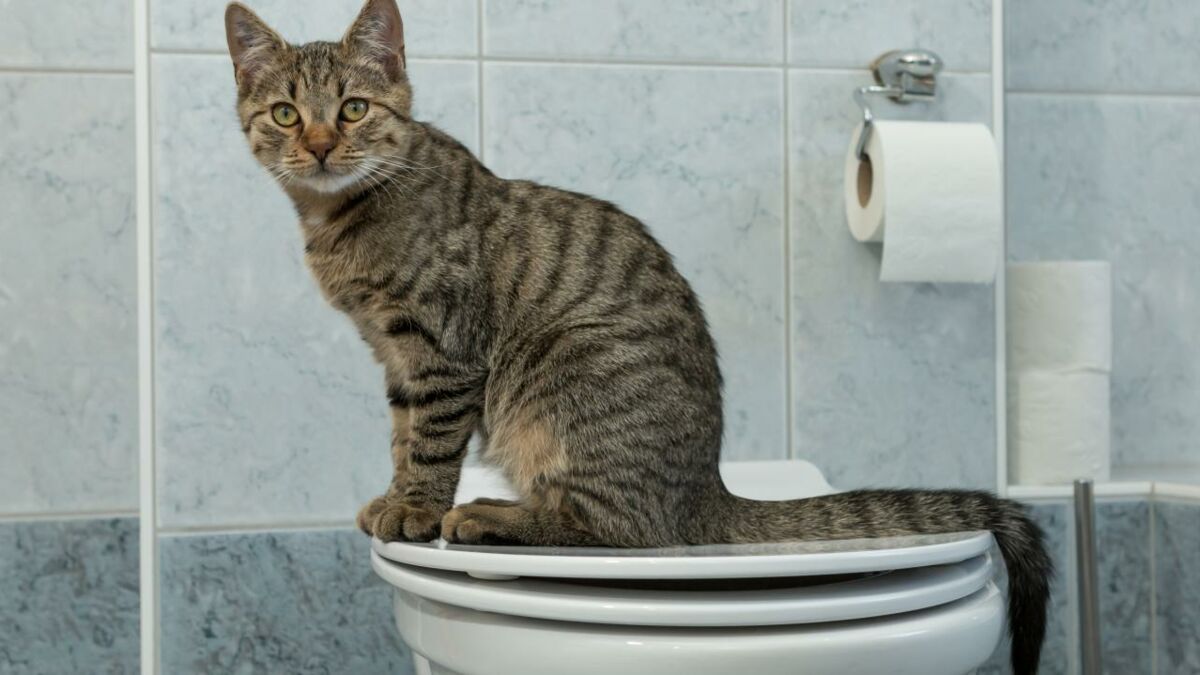Avoid Plumbing Problems: Don't Flush Cat Poop Down Your Toilet - Professional Guidance
Avoid Plumbing Problems: Don't Flush Cat Poop Down Your Toilet - Professional Guidance
Blog Article
We have unearthed this great article on Don’t flush cat feces down the toilet directly below on the web and thought it made sense to relate it with you on this site.

Intro
As cat proprietors, it's important to be mindful of exactly how we deal with our feline friends' waste. While it may appear practical to purge cat poop down the bathroom, this technique can have damaging effects for both the environment and human health and wellness.
Ecological Impact
Flushing cat poop introduces unsafe pathogens and parasites into the water system, posturing a significant risk to aquatic ecological communities. These impurities can negatively influence marine life and compromise water top quality.
Health Risks
In addition to environmental issues, purging cat waste can likewise pose health threats to people. Pet cat feces might have Toxoplasma gondii, a parasite that can trigger toxoplasmosis-- a possibly severe disease, specifically for pregnant females and individuals with damaged body immune systems.
Alternatives to Flushing
Fortunately, there are safer and much more liable methods to get rid of pet cat poop. Think about the adhering to options:
1. Scoop and Dispose in Trash
One of the most common approach of getting rid of pet cat poop is to scoop it into an eco-friendly bag and toss it in the trash. Make sure to use a specialized clutter inside story and deal with the waste immediately.
2. Usage Biodegradable Litter
Opt for naturally degradable feline trash made from materials such as corn or wheat. These trashes are eco-friendly and can be securely thrown away in the garbage.
3. Bury in the Yard
If you have a lawn, think about burying cat waste in a marked area far from vegetable yards and water sources. Make certain to dig deep enough to avoid contamination of groundwater.
4. Mount a Pet Waste Disposal System
Invest in a family pet waste disposal system especially made for cat waste. These systems utilize enzymes to break down the waste, minimizing smell and environmental impact.
Conclusion
Responsible animal ownership prolongs beyond supplying food and sanctuary-- it also involves proper waste management. By avoiding flushing cat poop down the commode and choosing alternative disposal techniques, we can reduce our environmental impact and secure human wellness.
Why Can’t I Flush Cat Poop?
It Spreads a Parasite
Cats are frequently infected with a parasite called toxoplasma gondii. The parasite causes an infection called toxoplasmosis. It is usually harmless to cats. The parasite only uses cat poop as a host for its eggs. Otherwise, the cat’s immune system usually keeps the infection at low enough levels to maintain its own health. But it does not stop the develop of eggs. These eggs are tiny and surprisingly tough. They may survive for a year before they begin to grow. But that’s the problem.
Our wastewater system is not designed to deal with toxoplasmosis eggs. Instead, most eggs will flush from your toilet into sewers and wastewater management plants. After the sewage is treated for many other harmful things in it, it is typically released into local rivers, lakes, or oceans. Here, the toxoplasmosis eggs can find new hosts, including starfish, crabs, otters, and many other wildlife. For many, this is a significant risk to their health. Toxoplasmosis can also end up infecting water sources that are important for agriculture, which means our deer, pigs, and sheep can get infected too.
Is There Risk to Humans?
There can be a risk to human life from flushing cat poop down the toilet. If you do so, the parasites from your cat’s poop can end up in shellfish, game animals, or livestock. If this meat is then served raw or undercooked, the people who eat it can get sick.
In fact, according to the CDC, 40 million people in the United States are infected with toxoplasma gondii. They get it from exposure to infected seafood, or from some kind of cat poop contamination, like drinking from a stream that is contaminated or touching anything that has come into contact with cat poop. That includes just cleaning a cat litter box.
Most people who get infected with these parasites will not develop any symptoms. However, for pregnant women or for those with compromised immune systems, the parasite can cause severe health problems.
How to Handle Cat Poop
The best way to handle cat poop is actually to clean the box more often. The eggs that the parasite sheds will not become active until one to five days after the cat poops. That means that if you clean daily, you’re much less likely to come into direct contact with infectious eggs.
That said, always dispose of cat poop in the garbage and not down the toilet. Wash your hands before and after you clean the litter box, and bring the bag of poop right outside to your garbage bins.
https://trenchlesssolutionsusa.com/why-cant-i-flush-cat-poop/

As a keen person who reads on Can You Flush Cat Poop Down The Toilet?, I figured sharing that piece of content was beneficial. Appreciated our blog? Please share it. Help somebody else discover it. Thanks a lot for your time. Please check up our blog back soon.
Contact Us Today Report this page